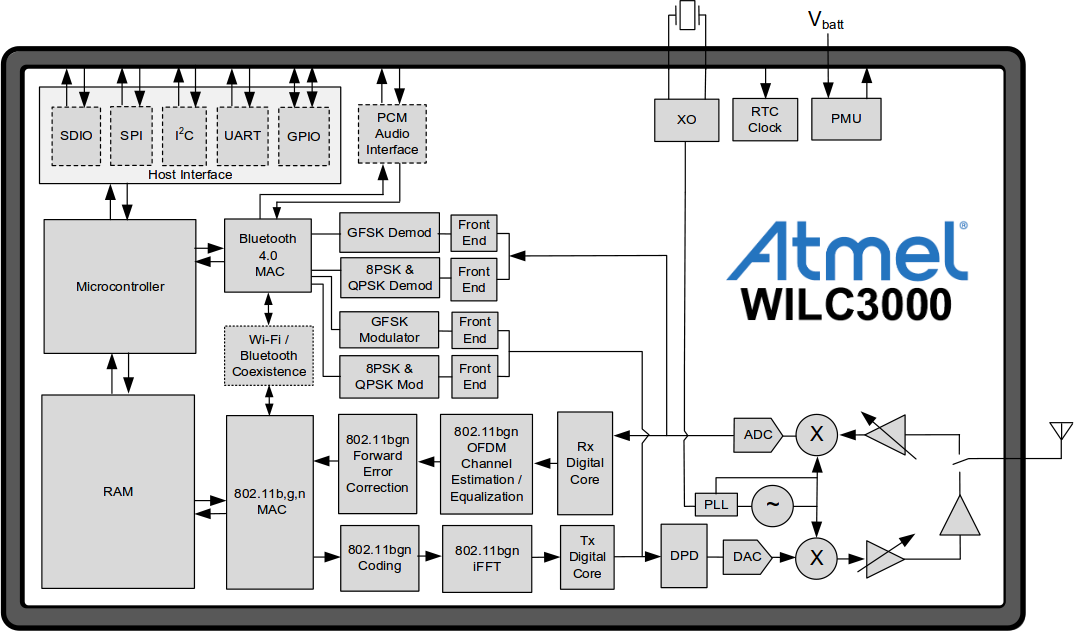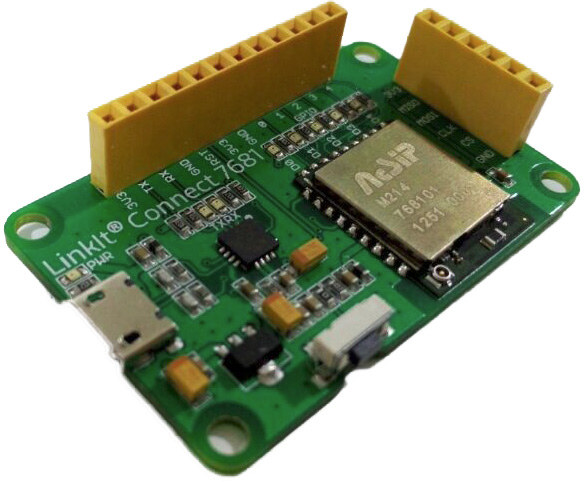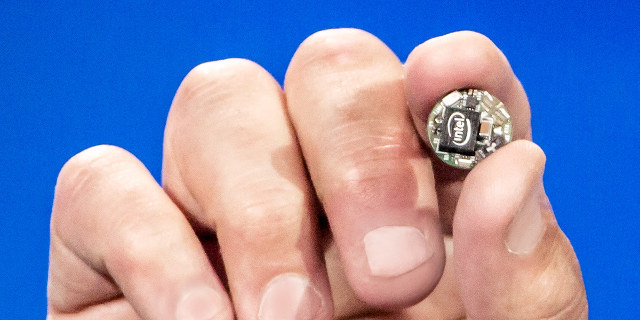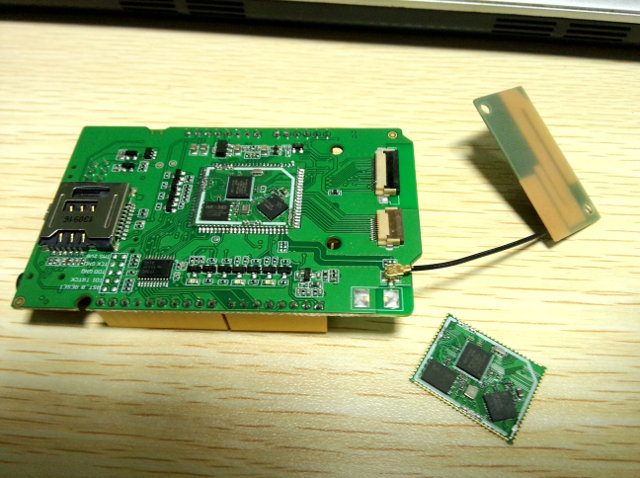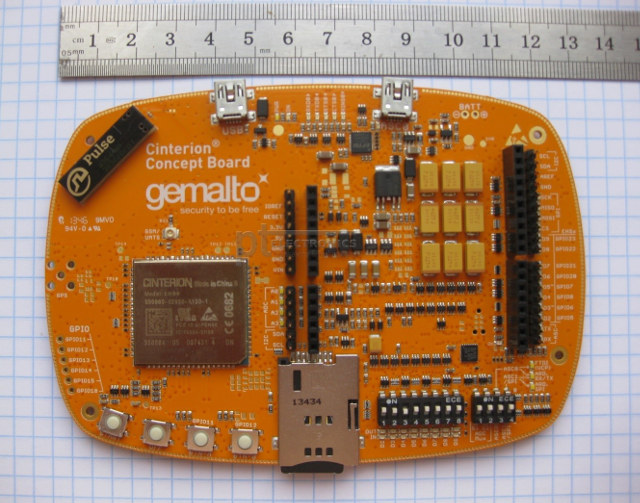Atmel has recently announced two SoCs supporting Wi-Fi and Bluetooth 4.0 that target M2M and IoT applications, namely WILC3000 wireless link controller and WINC3400 network controller which both integrate a power amplifier, LNA, switch and power management unit. WILC3000 and WINC3400 should share the following specifications: MCU – Cortus APS3 32-bit processor ROM/Flash – 256KB instruction/boot ROM (160KB for 802.11 and 96KB for Bluetooth) along with a 768 bits of non-volatile eFuse memory RAM – 420KB instruction RAM (128KB for 802.11 and 292KB for Bluetooth), and a 128KB data RAM (64KB for 802.11 and 64KB for Bluetooth), as well as 160KB shared/exchange RAM (128KB for 802.11 and 32 KB for Bluetooth) Wi-Fi IEEE 802.11 b/g/n RF/PHY/MAC SOC (2.4 GHz) IEEE 802.11 b/g/n (1×1) for up to 72 Mbps Wi-Fi Direct and Soft-AP support Supports IEEE 802.11 WEP, WPA, WPA2 Security, China WAPI security Bluetooth Version 4.0 Low Energy Class 1 […]
Snappy Ubuntu Core is an IoT Linux Distribution for ARM and x86
Canonical has announced a version of Ubuntu specifically designed for IoT devices running Linux, with a low hardware requirements, and a new package manager called snappy, replacing apt-get for this version of Ubuntu, which provides simpler, faster, and more reliable updates, stronger security, and allows roll-backs in case something goes wrong. Easy firmware updates are something missing in most connected device, which means they are more vulnerable to potential hackers, but with snappy security updates should be able to make it regularly, so that if something like heartbleed occurs again, you know your router, home automation gateway, connected washing machine, or robot will be soon patched automatically. Let’s go through the hardware requirements first: Processor – 600 MHz processor (ARMv7 or greater, or x86) System Memory – 128 MB RAM or greater (The system itself uses 40 MB RAM) Storage – 4GB flash / storage for factory reset and system […]
LinkIt Connect 7681 is a Wi-Fi IoT Board Powered by Mediatek MT7681
So it looks like Mediatek has decided to carry on with its Mediatek Labs endeavours, as after launching LinkIt ONE last year, they’re about to introduce LinkIT Connect 7681, a development board with a Mediatek MT7681 based Wi-Fi module, and access to various GPIOs. LinkIt Connect 7681 HDK (Hardware Development Kit) specifications: SoC – Mediatek MT7681 Andes N9 processor @ 80 MHz with 64KB RAM, Storage – 1MB SPI Flash for firmware Connectivity – Wi-Fi: 802.11 b/g/n for Station mode; 802.11 b/g for AP mode via a MT7681 module by AcSIP Headers – 12-pin header for UART, 5 GPIOs (also usable as software PWM), RESET, and 3.3V/5V/GND; 6-pin header for SPI, 3.3V and GND. USB – 1x micro USB for power and programming/debugging Misc – Reset push-button, 2x UART LEDs Power Supply – On-board 1A 3.3V voltage regulator (can be powered from USB connector) I/O Voltage – 3.3V for GPIO […]
Intel Curie Board Designed for Wearables is Powered by Quark SE SoC
Intel announced the Edison board at CES 2014, a board targetting wearables and IoT applications about the size of an SD card. At CES 2015, the company has gone smaller, by unveiling the button-sized Intel Curie module powered by a new Intel Quark SE SoC with a motion sensor, Bluetooth Low Energy connectivity and battery charging capabilities. Intel Curie specifications: Low-power, 32-bit Intel Quark SE SoC 384kB Flash memory, 80kB SRAM Low-power integrated DSP sensor hub with a proprietary pattern matching accelerator Bluetooth Low Energy 6-axis combo sensor with accelerometer and gyroscope Battery charging circuitry (PMIC) The module runs an unnamed open source RTOS, and the company will provide IQ software kits for references applications for wearables, such as counting steps, apps for mobile device, and so on. Intel Curie is expected to be found in smart products such as rings, bags, bracelets, pendants, fitness trackers and buttons. There’s basically no […]
LinkIt A-Core Packs Mediatek MT2502A SoC into a Tiny Module for Wearables
LinkIt ONE is a development board based on Meditak MT2502A SoC for wearables, and developed by SeeedStudio. With GPS, Wi-Fi, and GSM/GPRS connectivity, and a LiPo battery, it’s great to experiment IoT or wearable applications, but if you plan to launch an actual product, it could be nice to have a module, and built a baseboard around it. That’s exactly what SeeedStudio is working with LinkIt A-Core module. LinkIT A-Core module specifications: SoC – Mediatek MT2502AV ARM7 SoC @ 260 MHz with 32MB PSRAM and 32MB Flash on-chip. External Storage – 16M external Flash (MX25U12835F) Cellular Connectivity – GSM/GPRS quad-band 850/900/1800/1900MHz with RF7198 RF transmitter. Connectivity – Bluetooth 2.0 / 2.0 EDR / 4.0, GPS compatible GPS/GNSS (requires external GPS module) Expansion – 48 general purpose digital I/O Power supply: DC 3V~4.2V Power Consumption – > 3mA Dimensions – 19x23x2 mm The module is still in development, and the company welcomes […]
Crowdfunding Report for 2014 on CNX Software Blog
Following up on my 2013 Crowdfunding Report, I’ve gone through all 55 Kickstarter and Indiegogo crowdunding projects featured on CNX Software between December 2013 and November 2014 (inclusive) to see how well they fared. The table below sort projects chronologically as they were published on this very blog. Date Project Crowdfunding Site Funded? Pledged amount / Goal Expected Delivery Actual Delivery Comments 2. Dec. 2013 Micro Python Kickstarter Yes 97,803 GBP / 15,000 GBP 03/2014 04/2014 Available @ https://micropython.org/store/#/store 5. Dec. 2013 Plugaway Kickstarter Yes $162,835 AUD / $50,000 AUD 04/2014 – People upset because of lack of updates. Project might be dead, and backers lost their money 6. Dec. 2013 AIRTAME Indiegogo Yes $1,268,332 / $160,000 05/2014 12/2014 People have started received the beta versions, after a massive 8-month delay 7. Dec. 2013 Crystal Board Kickstarter No $14,574 / $200,000 04/2014 – The project appears to be dead 10. […]
Top 10 Posts of 2014 and Stats on CNX Software
Wow! After a slow start of the year, 2014 has been a busy year as new devices based on newer processor from Amlogic started to flood the market in Q2, soon followed by even more Rockchip RK3288 based media players, and then some more Amlogic S805 and Allwinner A80 boards and devices. It’s now the last day of the year, so just like in 2013, it’s time to look back on the main trends of the year, and based on the list of the top 10 most visited posts below, the new generation of ARM Android media players were the most important story of the year on CNX Software, but we also saw more IoT devices and board like Vidonn X5 or LinkIT One, lots of new Wi-Fi modules, and by the end of the year ESP8266 seemed to have won that fight, but being found in $3 Wi-Fi modules. […]
Gemalto Cinterion Concept Board Features 3G Connectivity, Arduino Headers for Secure Java M2M Applications
Gemalto is a digital security company providing software solutions, smart cards, and secure modules, and one the largest manufacturer of SIM cards. The company has launched a developer board earlier this year called Cinterion Concept Board with the company’s Cinterion EHS6 M2M Java embedded machine-to-machine (M2M) 3G module, and Arduino compatible headers. Cinterion Concept Board specifications: 2G/3G M2M Module – Gemalto Cinterion ESH6 with Java ME embedded support Cellular Connectivity GPRS/EDGE Class 12, HSPA, 5 bands 3G, 4 bands 2G. Voice support. On-board antenna (top left side on picture) SIM card holder Expansion Arduino Compatible headers 8 GPIO with level shifters, and corresponding LEDs USB – 1x mini USB port for power, 1x mini USB port for debugging and power Misc – Start on/off, and user buttons, LEDs for serial interface. Power – 5V via either mini USB ports, solder pads for external battery. Dimensions – N/A The board is […]


